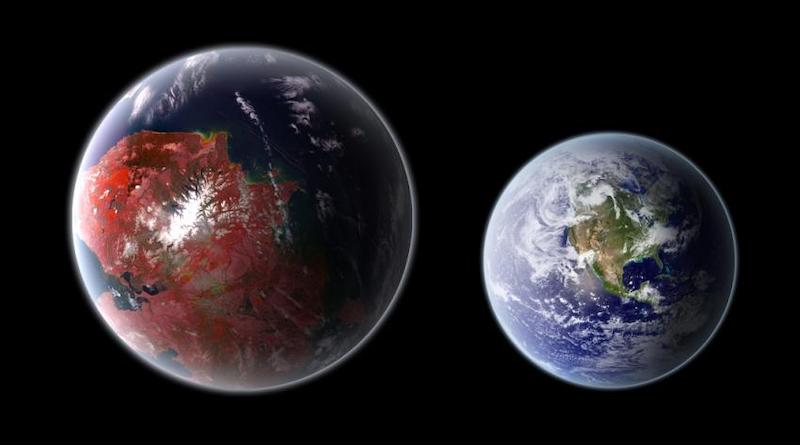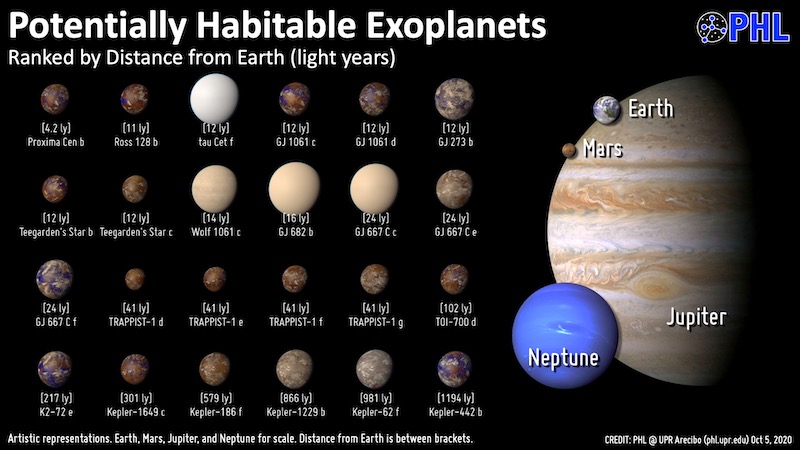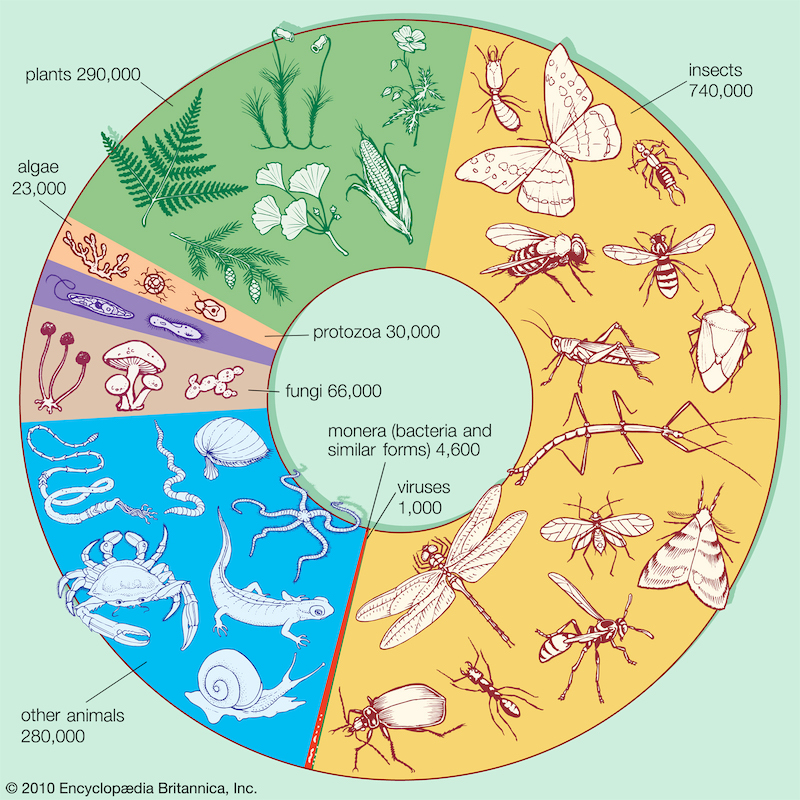
With its amazing diversity of life, Earth is unique in our solar system. But how rare is Earth’s biosphere – the thin layer of our world that supports life, extending high into our atmosphere and deep into our oceans – in our Milky Way galaxy? Astronomers are now finding exoplanets, or worlds orbiting distant stars, by the thousands. They estimate that there are billions of exoworlds in our galaxy alone. Surely, the galaxy must be teeming with life. Or is it? Researchers at the University of Naples in Italy suggest otherwise. Their new study suggests that that Earth-like biospheres on potentially habitable exoplanets might be rare.
The researchers published their peer-reviewed results in May in the Monthly Notices of the Royal Astronomical Society.
Oxygen-based Earth-like biospheres
The study focuses on Earth-like conditions where oxygen-based photosynthesis can occur. As we know from our own world, those conditions can also allow more complex life to develop. This process is called oxygenic photosynthesis, where plants on Earth convert light and carbon dioxide into oxygen and nutrients. As outlined in the paper:
Oxygenic photosynthesis is the most important biochemical process in Earth biosphere and likely very common on other habitable terrestrial planets, given the general availability of its input chemical ingredients and of light as source of energy. It is therefore important to evaluate the effective possibility of oxygenic photosynthesis on planets around stars as a function of their spectral type and the planet–star separation.

Not enough stellar radiation
But how easily could this occur on other potentially habitable worlds? It all has to do with how much stellar radiation – called photosynthetically active radiation (PAR) – the planet receives from its star. If there’s too little radiation, it makes photosynthesis a lot more difficult to start. From the paper:
We aim at estimating the photon flux, the exergy, and the exergetic efficiency of the radiation in the wavelength range useful for the oxygenic photosynthesis as a function of the host star effective temperature and planet–star separation. We compute analytically these quantities and compare our results with the estimates for the small sample of known Earth-like planets, and find that exergy is an increasing function of the star effective temperature, within the range 2600–7200 K [2300-7000 Celsius or 3700-12,500 Fahrenheit]. It depends both on the star–planet separation and the star effective temperature. Biospheres on exoplanets around cool stars might be generally light-limited. So far, we have not observed terrestrial planets comparable to Earth in terms of useful photon flux, exergy, and exergetic efficiency.

The planet needs to receive enough stellar radiation for living organisms to be able to efficiently produce nutrients and molecular oxygen. Stars that are only about half the temperature of the sun don’t produce enough radiation. Photosynthesis on planets orbiting such stars could still occur, but the growth of the biosphere would be limited.
Cooler and hotter stars have problems, too
The prospects for vibrant biospheres would dim further for red dwarf stars, which are only about a third as hot as our sun. In this scenario, there wouldn’t be enough stellar radiation for even photosynthesis to get a kick-start. According to Giovanni Covone of the University of Naples, lead author of the study:
Since red dwarfs are by far the most common type of star in our galaxy, this result indicates that Earth-like conditions on other planets may be much less common than we might hope.
Stars that are hotter than our sun produce plenty of the needed radiation, but don’t live as long as our sun. This therefore limits the amount of time available for life to evolve on any planets.
Suitable worlds for Earth-like biospheres may be few and far between
Right now, scientists only know of one potentially habitable exoplanet that comes close to receiving enough stellar radiation: Kepler-442b. This planet is about twice the mass of Earth, and is 1,200 light-years away. This is from the known rocky and potentially habitable exoplanets that have been found so far (currently 60). It should be noted, however, that many more rocky worlds like these are expected to be discovered, as the technology improves to find them. For the most part, larger gas giant-type planets are still the easiest to detect.

Covone added:
This study puts strong constraints on the parameter space for complex life, so unfortunately it appears that the “sweet spot” for hosting a rich Earth-like biosphere is not so wide.
Other kinds of biospheres
The overall results suggest that planets capable of sustaining Earth-like biospheres may few and far between. Of course, that is based on life as we know it, what we know about how life evolved on Earth and the role of photosynthesis. It’s possible, however, that there could exist alien biospheres that don’t resembles ours. There may be ones that use photosynthesis in ways not found on our planet, or don’t use photosynthesis at all.
Bottom line: A new study from researchers at the University of Naples in Italy suggests that highly-evolved, Earth-like biospheres may be rare on exoplanets. Many stars either don’t emit enough energy for life to develop past the basic photosynthesis stage or don’t live long enough for life to evolve on any planets that may otherwise be suitable.
Source: Efficiency of the oxygenic photosynthesis on Earth-like planets in the habitable zone
Via Royal Astronomical Society
The post Are Earth-like biospheres rare? first appeared on EarthSky.
from EarthSky https://ift.tt/3wpUWrS

With its amazing diversity of life, Earth is unique in our solar system. But how rare is Earth’s biosphere – the thin layer of our world that supports life, extending high into our atmosphere and deep into our oceans – in our Milky Way galaxy? Astronomers are now finding exoplanets, or worlds orbiting distant stars, by the thousands. They estimate that there are billions of exoworlds in our galaxy alone. Surely, the galaxy must be teeming with life. Or is it? Researchers at the University of Naples in Italy suggest otherwise. Their new study suggests that that Earth-like biospheres on potentially habitable exoplanets might be rare.
The researchers published their peer-reviewed results in May in the Monthly Notices of the Royal Astronomical Society.
Oxygen-based Earth-like biospheres
The study focuses on Earth-like conditions where oxygen-based photosynthesis can occur. As we know from our own world, those conditions can also allow more complex life to develop. This process is called oxygenic photosynthesis, where plants on Earth convert light and carbon dioxide into oxygen and nutrients. As outlined in the paper:
Oxygenic photosynthesis is the most important biochemical process in Earth biosphere and likely very common on other habitable terrestrial planets, given the general availability of its input chemical ingredients and of light as source of energy. It is therefore important to evaluate the effective possibility of oxygenic photosynthesis on planets around stars as a function of their spectral type and the planet–star separation.

Not enough stellar radiation
But how easily could this occur on other potentially habitable worlds? It all has to do with how much stellar radiation – called photosynthetically active radiation (PAR) – the planet receives from its star. If there’s too little radiation, it makes photosynthesis a lot more difficult to start. From the paper:
We aim at estimating the photon flux, the exergy, and the exergetic efficiency of the radiation in the wavelength range useful for the oxygenic photosynthesis as a function of the host star effective temperature and planet–star separation. We compute analytically these quantities and compare our results with the estimates for the small sample of known Earth-like planets, and find that exergy is an increasing function of the star effective temperature, within the range 2600–7200 K [2300-7000 Celsius or 3700-12,500 Fahrenheit]. It depends both on the star–planet separation and the star effective temperature. Biospheres on exoplanets around cool stars might be generally light-limited. So far, we have not observed terrestrial planets comparable to Earth in terms of useful photon flux, exergy, and exergetic efficiency.

The planet needs to receive enough stellar radiation for living organisms to be able to efficiently produce nutrients and molecular oxygen. Stars that are only about half the temperature of the sun don’t produce enough radiation. Photosynthesis on planets orbiting such stars could still occur, but the growth of the biosphere would be limited.
Cooler and hotter stars have problems, too
The prospects for vibrant biospheres would dim further for red dwarf stars, which are only about a third as hot as our sun. In this scenario, there wouldn’t be enough stellar radiation for even photosynthesis to get a kick-start. According to Giovanni Covone of the University of Naples, lead author of the study:
Since red dwarfs are by far the most common type of star in our galaxy, this result indicates that Earth-like conditions on other planets may be much less common than we might hope.
Stars that are hotter than our sun produce plenty of the needed radiation, but don’t live as long as our sun. This therefore limits the amount of time available for life to evolve on any planets.
Suitable worlds for Earth-like biospheres may be few and far between
Right now, scientists only know of one potentially habitable exoplanet that comes close to receiving enough stellar radiation: Kepler-442b. This planet is about twice the mass of Earth, and is 1,200 light-years away. This is from the known rocky and potentially habitable exoplanets that have been found so far (currently 60). It should be noted, however, that many more rocky worlds like these are expected to be discovered, as the technology improves to find them. For the most part, larger gas giant-type planets are still the easiest to detect.

Covone added:
This study puts strong constraints on the parameter space for complex life, so unfortunately it appears that the “sweet spot” for hosting a rich Earth-like biosphere is not so wide.
Other kinds of biospheres
The overall results suggest that planets capable of sustaining Earth-like biospheres may few and far between. Of course, that is based on life as we know it, what we know about how life evolved on Earth and the role of photosynthesis. It’s possible, however, that there could exist alien biospheres that don’t resembles ours. There may be ones that use photosynthesis in ways not found on our planet, or don’t use photosynthesis at all.
Bottom line: A new study from researchers at the University of Naples in Italy suggests that highly-evolved, Earth-like biospheres may be rare on exoplanets. Many stars either don’t emit enough energy for life to develop past the basic photosynthesis stage or don’t live long enough for life to evolve on any planets that may otherwise be suitable.
Source: Efficiency of the oxygenic photosynthesis on Earth-like planets in the habitable zone
Via Royal Astronomical Society
The post Are Earth-like biospheres rare? first appeared on EarthSky.
from EarthSky https://ift.tt/3wpUWrS

Aucun commentaire:
Enregistrer un commentaire